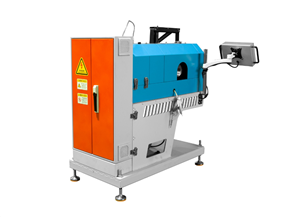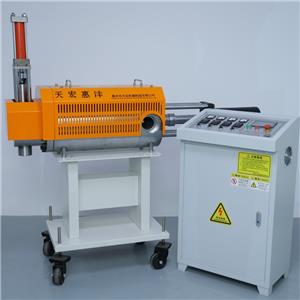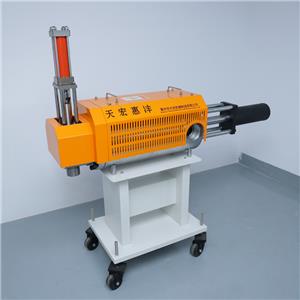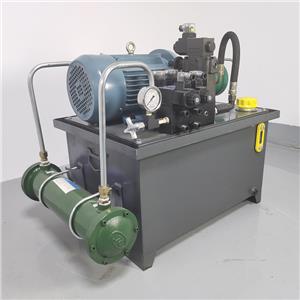Engineering Plastics: Polycarbonate (PC) – Properties, Applications and Development(2)
Application Fields of Polycarbonate
(I) Electronics and Electrical Appliances Field
Insulating Materials and Enclosures: Polycarbonate is an excellent Class E (120°C) insulating material, featuring good electrical insulation and dimensional stability, thus being widely used in the electronics and electrical industry. It can be used to manufacture various electronic components and equipment enclosures, such as heavy-duty plug sockets, wall sockets, connectors, modem enclosures, terminal posts, and optical fiber cable buffer tubes.
For example, the enclosures and components of office equipment like computers, printers, and copiers, as well as communication facilities, are mostly made of polycarbonate. It not only provides reliable insulation protection for internal precision electronic components but also, with its good molding processability, can be shaped into various complex appearance forms to meet the diversified needs of product design.
Data storage media: In the field of data storage, optical discs, as an important information storage carrier, have their substrates mainly made of polycarbonate materials. Polycarbonate films are also widely used in products such as capacitors, insulating sheaths, audio tapes, and color video tapes. Laser high-density recording disks made of polycarbonate have excellent high recording performance and durability, which can meet the needs for high capacity and high reliability of data storage in the era of big data.
(II) Automotive Industry Field
Lightweight Components: Against the backdrop of the automotive industry's pursuit of energy efficiency and high performance, lightweighting has become an important development direction in automobile manufacturing. Polycarbonate, with its excellent impact resistance, heat distortion resistance, good weather resistance, and high hardness, is highly suitable for manufacturing automotive parts. It can be used to produce various components for cars and light trucks, such as lampshades in lighting systems, instrument panels, heating plates, defrosters, and bumpers made of polycarbonate alloys.
Particularly in automotive lighting systems, leveraging polycarbonate's ease of molding and processing, related components like lamp heads, connecting pieces, and lamp bodies can be molded into lenses. This greatly enhances design flexibility, facilitates production and processing, and effectively solves the technical challenges faced by traditional glass in headlight manufacturing. In addition, polycarbonate can be used to manufacture parts such as car sunroofs. Compared with traditional glass materials, polycarbonate can reduce the weight of components by 30%-50%, achieving automotive lightweighting without compromising product performance and safety.
Interior Components: Polycarbonate can also be used in the manufacturing of automotive interior parts, such as interior trim strips and door handles. Its good dyeing adaptability allows interior components to exhibit a rich variety of colors and lusters, enhancing the overall aesthetics and texture of the car interior and providing consumers with a better driving experience.
(III) Construction Industry Field
Lighting and Sunshade Products: Polycarbonate sheets are widely used in the construction industry. Polycarbonate sheets produced by pressing or extrusion weigh only 50% of inorganic glass, but their heat insulation is 25% better than that of inorganic glass, and their impact strength is 250 times that of ordinary glass. These excellent properties give them obvious technical advantages in the construction industry, with approximately one-third used in glass products such as window glass and commercial display windows.
Polycarbonate hollow sun sheets and polycarbonate lighting panels, which are made of polycarbonate as the base material with various additives, feature light weight, thinness, high rigidity, resistance to deformation, good light transmittance, and excellent weather resistance. They are suitable for sunshades, daylight canopies in halls, ceilings of swimming pools and stadiums, and roof covers of large buildings and vegetable greenhouses. For example, large-scale construction projects such as the roof of Shanghai South Railway Station and the skylight of Chongqing Olympic Sports Center have adopted polycarbonate materials, which not only achieve good lighting effects but also add unique aesthetic charm to the buildings.
Decorative Materials: Polycarbonate has good dyeing adaptability, with bright colors and strong decorativeness. Meanwhile, it boasts excellent durability, with good resistance to various corrosive media, cold-heat effects, aging, and load impact, making it a high-quality building decorative material. Sheets made of polycarbonate with marble-like appearance and low-foaming wood-like appearance have broad application prospects in the construction and furniture industries, capable of creating unique decorative styles for architectural and home environments. In addition, polycarbonate can also be used to make hollow ribbed double-wall panels, greenhouse glass, and safety helmets in construction, playing an important role in the field of building safety protection.
(IV) Medical Field
Medical Devices: Polycarbonate products can withstand steam, cleaning agents, heating, and high-dose radiation sterilization without yellowing or degradation of physical properties during the sterilization process, thus being widely used in the field of medical equipment. They can be used to produce various medical devices such as artificial kidney hemodialysis equipment, high-pressure syringes, surgical masks, disposable dental tools, blood oxygenators, blood collection and storage devices, and blood separators.
These medical devices require repeated sterilization during use, and the good stability of polycarbonate enables it to meet this strict requirement, ensuring the safe use of medical devices and providing protection for patients' health.
Artificial Organs: Polycarbonate also has certain biocompatibility, expanding its application in the medical field to the manufacturing of artificial organs. For example, in the production of artificial kidneys, artificial lungs, and other artificial organs, polycarbonate can exert its excellent material properties, providing strong support for the progress of medical technology, helping patients improve their quality of life, and prolonging their lifespan.
(V) Other Fields
Food Packaging
Polycarbonate can be applied in the food packaging industry. Pure polycarbonate products are non-toxic; tableware made from it will not fade or get stained when in contact with tea, coffee, etc., nor will it affect the original color and taste of food. It is mainly used in the form of films for packaging foods that require respiration and oxygen, such as vegetables and meat. It can also be made into water buckets, beverage bottles, cups, baby feeding bottles, as well as food packaging like bottles, bowls, and plates.
However, since polycarbonate products may retain bisphenol A (BPA), which can easily leach out under high-temperature or strong alkaline environments, the European Union has prohibited the use of polycarbonate materials in baby feeding bottles containing BPA. To this end, the industry is also actively developing alternatives such as BPA-Free PC (e.g., Tritan copolyester) to ensure the safety of food packaging.
Machinery Industry
In the machinery manufacturing industry, polycarbonate can be used to produce various components such as gears, worms, turbines, racks, cams, mandrels, bearings, pulleys, hinges, transmission chains, nuts, washers, rivets, pump impellers, throttle valves, lubricating oil delivery pipes, as well as various housings, cover plates, containers, and parts for refrigeration and cooling devices.
The high strength, wear resistance, and good dimensional stability of polycarbonate enable it to meet the usage requirements of mechanical parts under complex working conditions, ensuring the normal operation of mechanical equipment. In aerospace machinery manufacturing, polycarbonate is also an indispensable material; the successful development of non-flammable polycarbonate has created better conditions for its application in this field. For example, there are 2,500 parts on the American Boeing 747 aircraft made of polycarbonate, with each aircraft using nearly two tons of polycarbonate in total, fully demonstrating the important position of polycarbonate in high-end machinery manufacturing.
3D Printing Materials
Polycarbonate, with its superior engineering material properties—odorless, non-toxic, high strength, excellent impact resistance, low shrinkage rate, as well as good flame retardancy and pollution resistance—serves as a high-quality 3D printing material. In the field of 3D printing, polycarbonate can be used to fabricate complex-shaped components through layer-by-layer deposition, meeting the needs of personalized customization and small-batch production, thus providing a new approach for innovative development in manufacturing.
Textile Industry
In the textile industry, polycarbonate can be used to produce textile bobbins, textile machine bushings, and the like. Its good wear resistance and mechanical properties enable it to adapt to the working environment of textile machinery, which involves high-speed operation and frequent friction, thereby improving the operational efficiency and service life of textile equipment.




